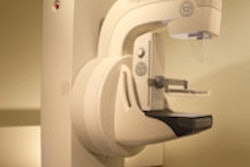Educational Exhibit | LL-IN3548-D | Lakeside Learning Center
A Japanese research team will present results showing the promise of LCDs powered by independent subpixel driving (ISD) technology.With this approach, 3 subpixels (included in 1 pixel) are driven independently, achieving three times the resolution of a traditional LCD without any change in pixel structure, according to Katsuhiro Ichikawa, Ph.D., of Kanazawa University in Kanazawa, Japan.
The researchers sought to compare the performance of a 9-mega-subpixel display (which is produced from a 3-megapixel display) with a 5-megapixel LCD in three studies: a detection study with 100 images, including single simulated 0.15-mm microcalcifications; a shape discrimination study using 100 images, including single simulated microcalcifications with round and square shapes; and a visibility comparison study by five radiologists using clinical mammography with microcalcifications obtained by a Mammomat Novation DR full-field digital mammography system (Siemens Healthcare, Malvern, PA).
The researchers did not find a statistically significant difference between the displays in the first two studies.
In the visibility comparison study, 92% of the cases read on the 9-mega-subpixel display received ratings of equivalent or better than 5-megapixel LCDs in evaluating the existence of microcalcifications. In evaluating microcalcification shape, 75% of the cases were judged to be equivalent or better.




















